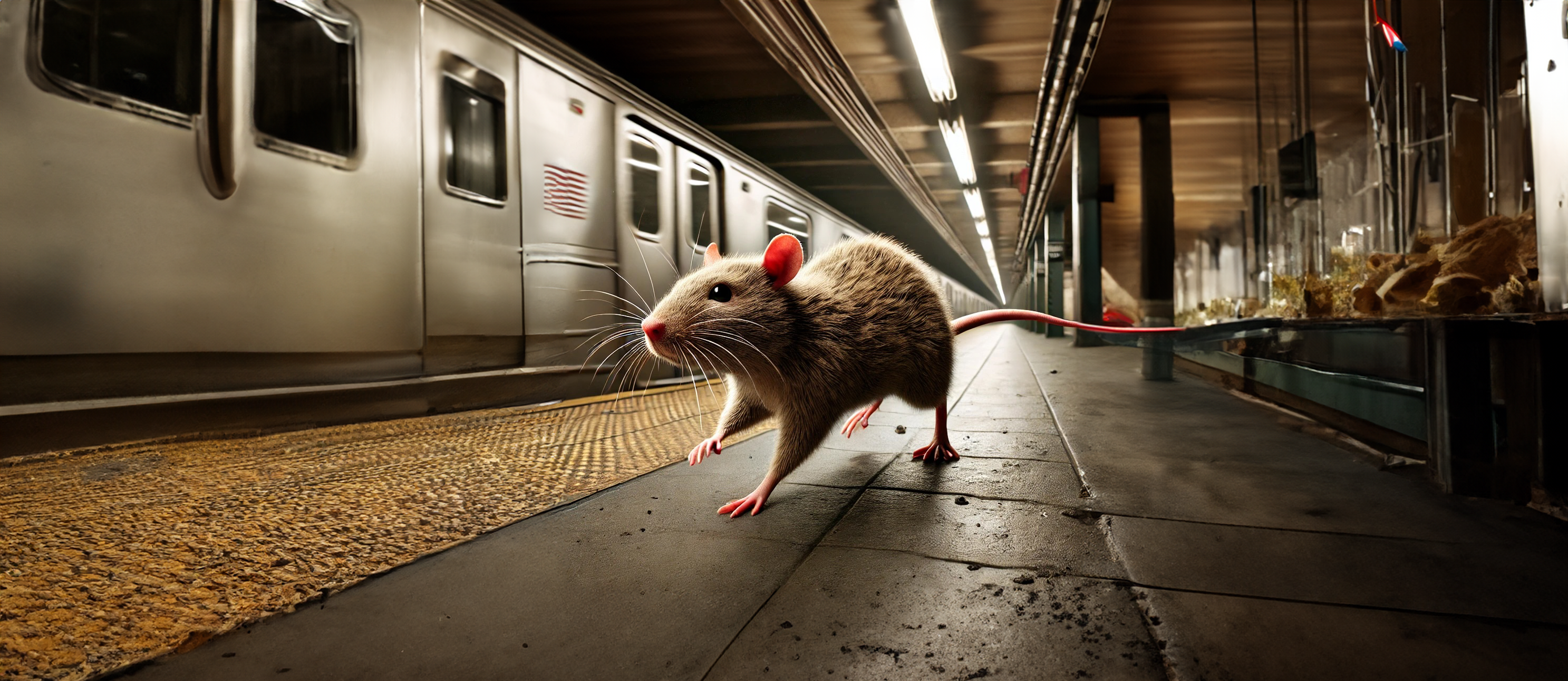Adam’s Journal
My wife and I visited New York earlier this month, and Mary was – no kidding – disappointed that she didn’t spy a single rat. I, however, did, witnessing one scurry across a subway platform as I awaited an early-morning train. Happily, it had no interest in me, and it quickly vanished into an opening in some sort of utility box.
Ewww.
To most of us, rats are kind of icky. But do they pose any kind of health threat?
Dr. Scofield Prescribes
I’m going to start with a reference source that’s outside my usual medical reading materials: Orkin’s Top 50 Rattiest Cities List. The pest-control company tallies this count annually based on the number of new residential rodent treatments it performs.
For the 10th straight year, Chicago topped the list in 2024. Orkin attributed the Windy City’s reign to its “abundance of alleys.” Still, the “hidden havens” of other large cities offered similar rodent attractions, with New York and its subways lifting the Big Apple to number 3.
Nevertheless, for this column’s readers, the most disturbing entry came in at number 47. It represented this particular city’s first entry into the ranks of renowned rodent refuges.
Oklahoma City, welcome to the rat race.
So, unfortunately, your question has heightened relevance to us all. And the short answer is yes, rats do pose a health risk for a wide range of infectious illnesses.
The dangers fall into two categories. The first are diseases that spread directly through contact with infected rats or other rodents. This can come directly through a bite or being scratched, which is pretty rare when it comes to wild rodents. More commonly, it happens by breathing in infectious airborne particles shed by the animals in droppings, or by touching those dropping and then touching the eyes, nose or mouth.
Diseases in this category include a wide range of viruses and bacterial infections. Most of these are fairly rare, but when they surface, they can be deadly. A good example is hantavirus, the flu-like infection that appears to have claimed the life of Betsy Arakawa, the wife of actor Gene Hackman (who had Alzheimer’s and appears to have died several days after Arakawa, his sole caregiver, succumbed to hantavirus).
Rats and other rodents also act as a “vector” for other diseases, incubating in the animals before being spread by ticks, fleas or other biting insects that have fed on infected animals.
Illnesses in this category include Lyme disease, typhus and the plague.
More locally, there’s tularemia, also known as rabbit fever. Eastern Oklahoma has the dubious distinction of being responsible for a significant fraction of the nation’s cases of this infection, which is caused by a bacteria and is most often spread from rodents to people by tick bites.
So, not surprisingly, wild rats and human health don’t make good bedfellows.
That said, at the Oklahoma Medical Research Foundation and elsewhere, laboratory rats have proven a helpful experimental model for studying a wide variety of biological processes. But that’s a tale – tail? – for another day.
–
Dr. Hal Scofield is a physician-scientist at the Oklahoma Medical Research Foundation, and he also serves as Associate Chief of Staff for Research at the Oklahoma City VA Medical Center. Adam Cohen is OMRF’s senior vice president and general counsel. Send your health questions to contact@omrf.org.



